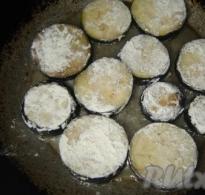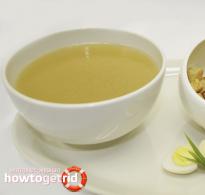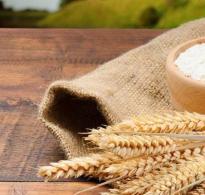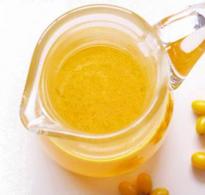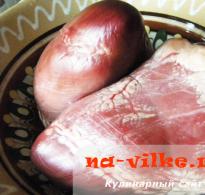Jellied meat made from any meat is a universal step-by-step recipe. Inspiration to you, good luck and bon appetit! Step-by-step recipe: Beef jellied meat
What dish is it hard to imagine without? New Year's table? Of course, without jellied meat. Of course, the process of preparing jellied meat is not very fast, but if you think that it is very complicated, then you are mistaken. It’s worth knowing a few secrets, and then everything will definitely work out. Today I will tell you a recipe for making classic jellied meat.
Classic jellied meat recipe
Kitchen utensils: pan, spoon, bowls, knife, sieve, garlic dish, ladle.
- When choosing pork legs, pay attention to their appearance. They must be clean, without visible damage, and have natural pink And pleasant smell. The cut on the legs should be wet; if it is already dry, then such a product is not worth buying. The quality of the leg can be checked in this way - press with your finger on the most fleshy part, if the hole is quickly restored, then the offal is fresh and good quality. The legs should not have too dense bristles.
- I recommend washing thoroughly before use. pork feet warm water, clean thoroughly and rinse again.
- Soak the offal in equal proportions of milk and water and leave overnight. After this, rinse thoroughly and pat dry with a napkin and begin cooking.
- To cook pork legs quickly, cut them into several pieces.
- To achieve transparency of the broth, after the first boil, drain the water and rinse the pan to remove any coagulated protein.
- After the broth has cooked, skim off any fat that has risen to the surface. This way we will get rid of the fatty layer on the finished jellied meat.
Preparing jellied meat
- Peel 3 carrots and 180 g onions. Using a vegetable peeler, remove the top layer from 4 celery stalks. We clean the pre-soaked legs again and rinse them with water. We cut them into several parts.
- Place 1.5 kg of beef in a large saucepan. There is no need to cut it, this way the taste of the meat will be preserved. We also add 4 pcs. chopped pork legs and 4 pcs. pork cheeks. On top we place celery stalks cut into two parts, whole carrots and onions. Add 5 g peppercorns and 6 pcs. bay leaf.

- Fill the pan with water so that it completely covers the meat and place it on the stove. During cooking, be sure to remove the foam from the broth. After the first boil, add salt and reduce the heat. After 1.5 hours of cooking, remove the vegetables from the broth. We discard the onion and celery, and reserve the carrots for decoration.

- Cook the broth over low heat for about three hours.
- After the time has passed, remove the meat from the broth.

- Pass the broth through a sieve. We collect all the fat from the surface of the broth.
- We disassemble the meat into small fibers; it is best to do this with your hands. This way you will be sure that the jellied meat will be seedless.

- Divide the meat into bowls.

- Peel the head of garlic and chop it with a garlic clove. Add chopped garlic to the broth and bring to a boil, then remove from heat.
- Place carrot slices and parsley leaves on the meat.

- Fill the meat containers with broth. Let the jellied meat cool first at room temperature. After it has cooled, put it in the refrigerator until completely hardened.

Classic jellied meat recipe video
In this video you will see everything important points preparing jellied meat.
Useful properties of jellied meat
- The collagen contained in jellied meat makes our skin elastic and slows down aging, it also slows down the process of erasing cartilage in the joints and has a beneficial effect on muscles, making them strong and elastic. Pork collagen is absorbed by the body better than beef collagen. Do not forget that the calorie content of pork jellied meat is much higher than that of chicken or beef.
- Gelatin is also very beneficial for our joints, hair and skin.
- B vitamins are involved in the structure of hemoglobin in the body. On nervous system polyunsaturated acids have a positive effect.
- Lysine improves the absorption of calcium in the body and has an antiviral effect.
Homemade jellied meat recipe
Cooking time: 7 o'clock.
Yield of the finished dish: 7-8 liters.
Kitchen utensils: pan, knife, bowls, gauze or sieve, ladle, spoon.
Ingredients
Making homemade jellied meat
- Peel two onions and two carrots. We wash the knuckle and two pork legs with water several times and scrape the skin well.

- Place pork legs, knuckle, half a chicken and two in a saucepan. pork tongue. Fill with water and put on fire.

- After the first boil, drain the water and wash the pan to remove any coagulated protein. Return the meat to the pan and add half a teaspoon of cardamom and mustard seeds, 5 g black pepper and 3 pcs. bay leaf.
- We also put two whole onions and two carrots there. Add 60 g of salt.

- Pour in all the ingredients clean water and put it on fire. After the water has boiled, reduce the heat to low. The broth should no longer boil. We add water every hour as it boils away. We take out the vegetables after 1.5 hours. Discard the onion and reserve the carrots for decoration.
- Simmer the broth over very low heat for 5-6 hours. During cooking, skim off the foam.
- After the time has passed, remove the meat from the broth. After the meat has cooled, remove the bones and separate it into fibers. Strain the broth through cheesecloth, this way we will get rid of spices and small bones.
- Place carrots cut into slices on the bottom of the bowl.

- Then lay out the meat and fill it with broth.

- Leave the jellied meat to cool at room temperature and then put it in the refrigerator.

Video recipe
This video recipe will help you prepare delicious, homemade jellied meat.
How and with what to serve jellied meat
Jellied meat can be served in a large bowl or plate, but you can also serve it in portions. For this you will need small glass bowls. Place the carrots on the bottom of the bowl, fill it with jellied meat and put it in the refrigerator until it hardens. Before serving, dip the bottom of the bowl into boiling water and hold for a few seconds, then turn it over onto a plate, decorate with herbs and serve.
Jellied meat – independent and hearty dish. It is traditionally served with black bread, horseradish or mustard.
If you are worried that your jellied meat will not harden, then do it. For those who want less fatty dish, will do. Very quick and easy to do. Well, it is considered the most healthy and delicious.
Recipes huge amount, all you have to do is choose the option you like and start cooking.
which can be found in cookbooks very simple, most often prepared from meat by-products. There are only options when this dish is made from other ingredients. Housewives can only choose between classic recipes and original ones.
Jelly. Fish recipe
A tasty and unusual jelly is obtained from pike perch. To do this, take a kilogram of fish, a liter of water, onions (a couple of heads), 3 eggs, carrots, some olives, bay leaves, and peppercorns. And for jelly you will need broth (1 liter), 2 tablespoons of gelatin, celery, onion, carrots and parsley.
You need to fillet the pike perch. To do this, it is peeled from the skin and carefully separated from the bones. In turn, the head, all the cartilage, fins, and skin are used to make broth. Onions and all kinds of roots are also added there. The “ear” should stand on low heat for 2 hours. At the end, bay leaf, pepper and salt are added to the broth.
The resulting broth is filtered and sent to a clean container. That's where the pieces go fish fillet and the “ear” are allowed to boil, after which the pike perch is cooked over low heat until cooked. The pieces are removed from the broth and cooled slightly.
Gelatin is poured into 3 spoons. It needs to stand for 10-15 minutes to swell well. The broth goes back onto the stove, where it boils, and then gelatin is added and everything is thoroughly mixed. The fish, placed in deep bowls, is filled with this liquid and sent to the refrigerator. It is best to decorate the resulting dish with boiled eggs and herbs or slices of carrots.
Beef jelly
Jelly is also made without the use of gelatin. The classic recipe requires the presence beef meat on the bone, half a kilogram of beef legs, carrots, root parsley, several cloves of garlic and a sauce made from horseradish with sour cream (you should get half a glass). All meat and legs are thoroughly washed and filled with water, cooked for several hours (5-6 is enough). About an hour before cooking, various spices and vegetables are added to the broth.
The meat is removed from the bones and divided into pieces. The same goes for the legs. The resulting broth is filtered well. Meat and fatty pieces are combined with the broth and heated again and boiled for 10-15 minutes. At the end, chopped garlic gets into the future jelly. Only after this is the broth poured into separate containers and placed in the refrigerator to harden. TO ready-made dish served original sauce horseradish with sour cream.
Pork foot jelly
Another classic version Russian jelly implies that the hostess has pork legs, ears and heels. You will also need 2 carrots, parsley at the root, garlic (several cloves), onions, 2 eggs, bay leaves, salt and peppercorns.
All legs and other offal are filled with water and boiled for about 5 hours. Each time it is necessary to remove the resulting foam. As soon as everything is cooked, the meat and veins are separated from the bones, which are sent back to the broth and cooked for another hour along with carrots, onions, garlic, parsley and spices. Then the finished broth is filtered and mixed with chopped meat and carrots, which are cut into slices. The mixture is brought to a boil and sent into deep molds. They are placed in the refrigerator to harden. You can decorate the resulting jelly on the table with dill and parsley.
Jelly. Mushroom recipe
To prepare the original mushroom version jelly will require any mushrooms. They can be pickled, dried, salted or even fresh. The main thing is that there are about 150g of them. You also need gelatin, mushroom broth (250ml), a head of garlic and salt.
Mushrooms should be boiled and finely chopped. Meanwhile, gelatin is diluted in mushroom broth. Salt and chopped garlic are also added there. Pieces of mushrooms should be placed on the bottom of the molds and filled with gelatinous water. The dish should be cooled until completely formed, and served after a few hours.
Jelly is always excellent. Not a single feast is complete without this dish.
Kholodets is one of the most popular cold appetizers in Russian. festive table. You can serve it simply for lunch, for example, with mashed potatoes instead of store-bought sausage. Therefore, knowing how to cook jellied meat will be useful for every housewife. The following are the most published successful recipes this dish.
How to cook classic jellied meat?
Several decades ago, only tails, legs, ears, heads and other parts were used to prepare jellied meat. meat carcass, which cannot be prepared in any other way other than prolonged cooking and gelling. But modern housewives have improved classic recipe, adding meat pulp to it, as well as large number spices
Ingredients included in the recipe
The classic recipe always includes pork legs and ears. Without these components with gelling components, the jellied meat simply will not harden. In addition to them, you can use other meat parts pork carcass. Many cooks add a whole chicken to the ears and legs, from which a large amount of meat can be cut.

In addition to 2 ears, 2 legs and a large chicken, vegetables are taken to cook the broth. It is enough to use 3 pieces of carrots and onions. When all the ingredients are cooked, the onion is always thrown away, but the carrots can be cut into shapes and beautifully placed in containers with jellied meat.
Chopped garlic (to taste), peppercorns and bay leaves perfectly complement the jelly. The finished broth is filtered from all these components and only then poured onto the meat. The liquid is salted at the very beginning of cooking.
How long does it take to cook jellied meat?
It is difficult to say for sure how long to cook jellied meat. It depends on the size of the pieces of meat, the heat level of the stove and some other factors. On average, the dish takes from 4 to 8 hours to prepare. During the process, be sure to remove the foam from the surface of the broth.
If you use a pressure cooker, the meat will be cooked in just 2 hours. True, in this device the broth will be more cloudy. For transparency, it is recommended to drain the first liquid after boiling.
How to disassemble and serve the dish?
First of all, parts of the carcass are always removed from the broth, the meat is removed from them, which needs to be cut into small pieces. Bones and sinews are thrown away. The meat is placed in convenient jellied containers, and strained broth from the pan is poured on top. When pouring, you can decorate with egg slices and boiled carrots.

It is best to leave the jellied meat in the refrigerator to harden overnight. Before serving, the top layer of fat is removed from it. You can decorate the jelly with finely chopped herbs. Mustard or sour cream and horseradish sauce are served separately.
- Place the thigh and pork legs in a saucepan and cover with water for 10 hours to make it easier to clean the legs and meat later.
- After 10 hours, place the pan with meat and water on strong fire and bring to a boil.
- While the meat is cooking, skim off the foam until the broth becomes “clean” and transparent.
- Wash the onion along with the peel.
- Wash and peel the carrots.
- Place the peeled onion in the pan to give the jelly a beautiful shade.
- Add carrots, peppercorns and bay leaf.
- After the broth boils, turn the heat to very low; do not allow the broth to boil.
- Cook the broth for 8 hours over low heat, then add salt.
- Remove the meat and cool, and cool the broth a little too.
- Remove carrots from the broth and chop finely.
- Peel the garlic and chop finely.
- Place chopped carrots and garlic into deep plates.
- Pass the broth through a sieve.
- Separate the meat into fibers and cut into small pieces.
- Remove the gelling agents from the legs and chop them finely.
- Place the meat and gelling agents on plates where the garlic and carrots are already placed.
- Pour the broth passed through a sieve into plates.
- Place the jelly for 8 hours cool place so that it hardens and gels.
Jelly is usually served with horseradish or mustard.
The great-grandfather of jellied meat was the most ordinary rich meat broth, which people have been brewing since time immemorial. When it cooled, it turned into a thick, viscous mass. The reason for this is special gelling substances found in the bones and meat of animals. But this feature was rather a minus than a plus. To get rid of this viscosity, the broth had to be heated each time.
The French came up with the idea of turning this disadvantage into an advantage. They boiled poultry, game, pork, veal and rabbit together. Then they minced the meat and mixed it with spices and eggs. Lightly dilute the resulting broth (to the consistency thick sour cream) and exposed to the cold. Sometimes they even put it under a press. This dish was called "galantine", which translated from Old French meant "jelly". Galantine was the grandfather of our jellied meat.
During the time of the craze for “everything French,” Russia signed up not only pundits, but also chefs. So they brought the recipe for galantine. True, before this there was something similar in Russian cuisine. It was called jelly and was prepared in rich houses the day after the next feast or ball. The remaining food was crumbled almost into porridge, boiled in broth and refrigerated. The result was jelly. This dish was unappetizing and not very beautiful to look at, so it was mainly the servants who ate it.
The French refined, improved and perfected something, applying the principles of galantine. They introduced clarification of broths, came up with the idea of slightly tinting them with turmeric, saffron and lemon zest. So the unsightly jelly became aspic, rightfully taking its place even on royal tables. As for the common people, they preferred jellied meat.
Firstly, because pork or beef (the basis of jellied meat) is much more affordable than sterlet or pike, which make the best jellied meat.
And secondly, it still takes less time to prepare even the most sophisticated jellied meat than it does to prepare an exquisite aspic. Today jellied meat is much more popular than its “close relatives” - jelly and aspic. Conquering another country, he received various national “additives”, the recipes were “customized” to suit local peculiarities and traditions. This is how jellied meat from lamb, turkey, chicken, rooster and carp appeared. Modern chefs have also made their contribution by introducing the world to jellied meats made from seafood, vegetables, and even dessert ones: chocolate, coffee, fruit.
Prepare the ingredients for the jellied meat. Put the spices and vegetables aside for now; you will need them later. Soak the legs and ears in water with the addition of vinegar, a little is needed, just to remove the smell of the pig. Also, the water should not be ice cold, let it be warm or room temperature, then the dirt can be easily cleaned off later. Leave them for an hour.
After an hour, use a sharp knife to clean the legs and ears from dirt and soot. Chop off your nails with a hatchet. Wash the ears very thoroughly in the folds. Everything must be perfectly clean. Wash the chicken, remove excess fat and butt, remaining entrails, and feathers. Place all the meat in a deep pan.
Fill with clean cold water and bring to a boil. The meat should be covered with 2 fingers. Cover the pan with a lid, not too tightly, and cook over very low heat for 6 hours. Check the pan periodically. If foam has formed, skim it off.
An hour before the end of cooking the meat, add peeled onions and carrots, salt, bay leaves and peppercorns to the broth. Continue cooking the jellied meat.
After 6 hours, the jellied meat is almost ready. Carefully remove carrots, bay leaves and onions from the broth. They won't be needed. I sometimes finely chop carrots into the broth for beauty, but this is not necessary. Let the jellied meat cool.
Carefully remove all the meat from the aspic and let it cool so you can handle it with clean hands. Separate the meat from the bones. Place all the meat in vases, deep plates, and small bowls. I usually put a little more than half the plate, because there will still be broth.


